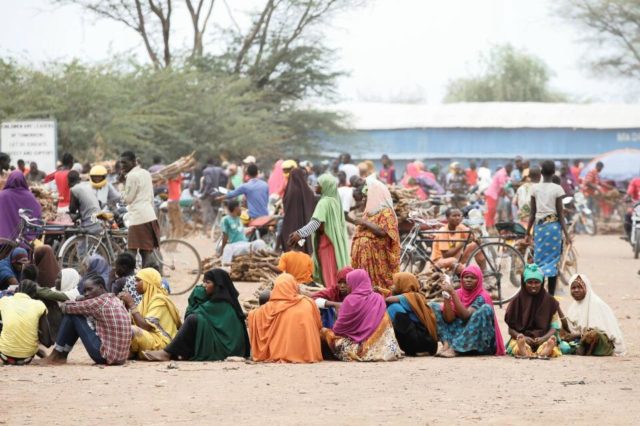This approach involved pressing governments to allow refugees to be able to generate income, including being able to work
TENS of cities in Africa, such as Johannesburg, Dar es Salaam and Kampala, are overwhelmed by an inflow of people fleeing conflicts in different parts of the continent. In particular, people living in Mali, Somalia and South Sudan flee their home countries to seek safety.
About 17.5 million refugees worldwide don’t live in camps but live in urban areas. The 2018 World Refugee Council reports show that 60% of all refugees and 80% of all internally displaced persons are living in urban areas.
This is a result of conscious policy. For example, the United Nations High Commissioner for Refugees (UNHCR) recognises that camps can turn into de facto prisons. But it’s also because many refugees don’t want to live in camps.
Since the 1967 Biafra civil war – the first major refugee crisis in independent Africa – international aid organisations have primarily housed refugees in rural camps, where they were provided basic assistance. That year the then UNHCR Commissioner Sadruddin Aga Khan stated that urban refugees were viewed as a problem, even by the most sympathetic commentators.
It wasn’t until three decades later that the UN refugee agency issued its first official policy statement on urban refugees. Concerned that making it easier for refugees to live in urban areas might pull them away from remote camps, it promoted a model of “self-reliance” to keep them at bay.
This approach involved pressing governments to allow refugees to be able to generate income, including being able to work.
The agency has continued to update its policies. Its 2009 policy paper reflected the reality that more than half of all refugees were living in urban areas. This was the first major shift away from giving primary attention to camps. The policy ensured that cities were recognised as legitimate places for refugees to live in and exercise their rights.
The UNHCR went further in 2014 when it advocated that camps should be an exception, and that where they exist they should be phased out at the earliest possible stage.
There is confusion on the policy front. Though the UNHRC’s current strategic plan acknowledges that more refugees are moving to cities, it offers a few recommendations on how cities could serve them better.
In practice, that means urban refugees mostly take care of themselves. Some can afford to rent apartments. Others stay with family and friends. Many end up homeless and indigent.
Their undocumented status makes self-reliance difficult. Thousands of refugees and asylum seekers living in cities around the world are denied work permits, pushing them into poorly paid, black market jobs. Few can access formal education or health services.
Politics is one reason that the UNHCR has been sometimes slow to address the urban refugee crisis. It has faced immense pressure from member countries to continue building and administering rural camps rather than to help refugees integrate and resettle in cities.
Right-wing politicians everywhere – from Uganda to Kenya – often portray displaced people as a national security threat. A 2010 report by the global think tank the Overseas Development Institute found that in Kenya refugees were politically unpopular.
The government played down refugee needs because it didn’t want to draw attention to them.
Once refugees entered Nairobi, they essentially disappeared.
In November 2017, the International Organisation for Migration and the umbrella group United Cities and Local Governments organised 150 cities around the world to sign a declaration on the rights of urban refugees.
Asserting that refugees can “bring significant social, economic and cultural contributions to urban development”, they called on international organisations and national governments to support cities politically and financially to care for refugee populations.
Yet, poorer cities need both national and international economic support to meet the needs of their newest residents. Cities cannot change national laws to make refugees more welcome.
But with qualified help – and a lot less hindrance from national governments – they can provide better basic protection.
Sentencing refugees to life in a camp could be a terrible burden. But, as xenophobic attacks in South Africa show, the alternative may be worse still.
On top of this, all across the continent non-camp refugees are still, for the most part, invisible, untraceable and in need of help.
D’Orsi is a research fellow and lecturer at the South African Research Chair in
International Law at the University of
Johannesburg. This article was first published in The Conversation








